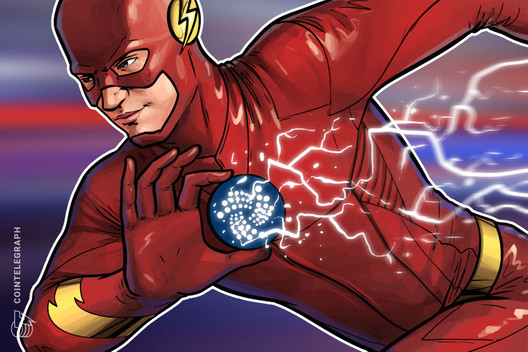IOTA’s Chrysalis Upgrade Turbocharges Network Speeds 50x
IOTA’s network upgrade Chrysalis is now live, bringing an exponential increase in speed.
The IOTA project has successfully completed its Chrysalis upgrade, enabling the network to handle up to 1000 transactions per second. This is around 50x faster than previously when the network topped out around 20 TPS.
According to an Aug. 19 blog post from the IOTA Foundation, IOTA 1.5, AKA Chrysalis, is now live. The upgrade is designed to be an intermediate stage before the removal of the Coordinator from the IOTA network. The Coordinator is a centralized server managed by IOTA developers that creates checkpoints in its transaction history.
Under Chrysalis, the confirmation time of transactions for token transfers on the IOTA mainnet has been reduced to four seconds in some cases, at least eight times faster than before.
It’s also possible the network may be able to handle more than 1000 TPS — during community testnet testing, IOTA stated the network was able to reach 1500 TPS.
From Pollen to ‘Coordicide’
Today’s network upgrade, Chrysalis Phase 1, is the second to last step towards the “Coordicide” — i.e. the removal of the Coordinator — before implementing Phase 2 later in 2020. Phase 2 includes “support of a new signing scheme and with it reusable addresses, UTXO, new node API, new client library API, a brand new wallet for both desktop and mobile and more.”
There are three stages in the official testnet for the upgrade, named after the stages in the creation of honey: Pollen, Nectar, and Honey.
The network announced it had started the first stage, Pollen, in June. Nectar, due in the fourth quarter, is expected to provide a full implementation of Coordicide modules on an incentivized testnet, testing the network for bugs or issues before finally releasing the mainnet. Network participants can generate “nectar,” or rewards for finding bugs or potential attack vectors.
The final stage in the testnet for IOTA 2.0, Honey, will incorporate all final Coordicide modules, representing the first version of IOTA 2.0, or fully decentralized IOTA mainnet. The finished upgrade on mainnet is expected in early 2021.




